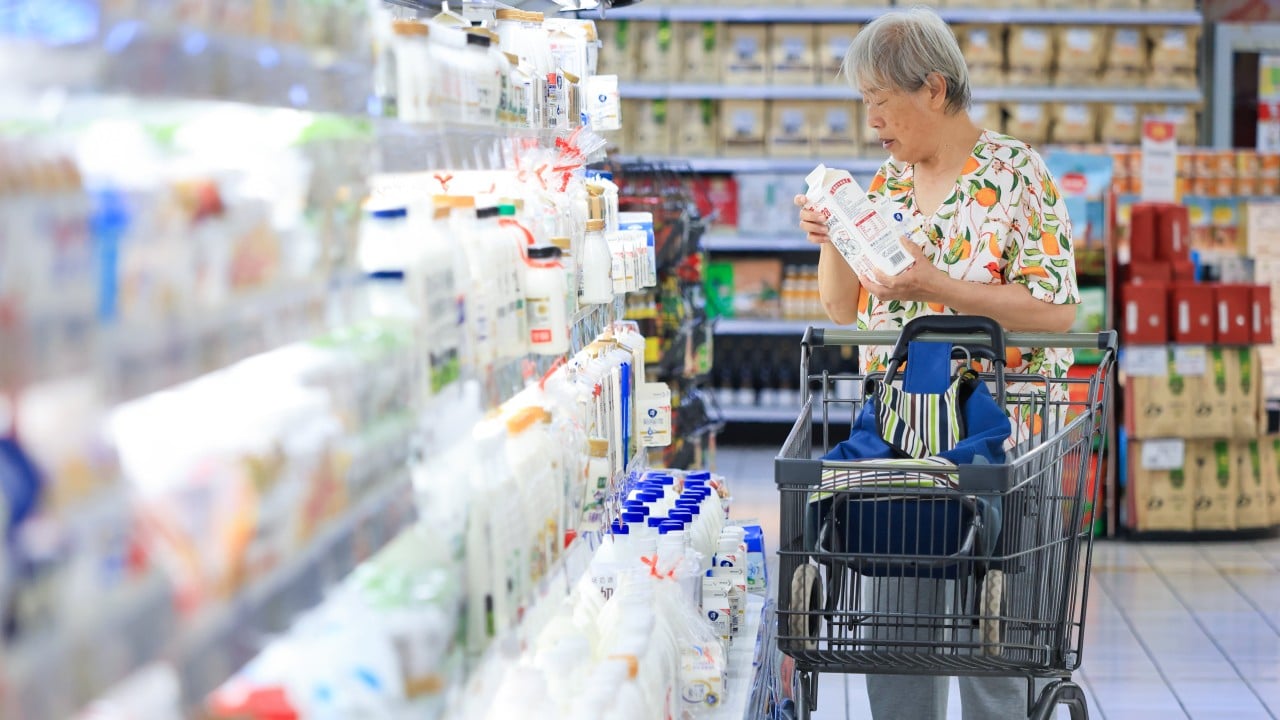Explainer | China’s consumer inflation edges down, but ‘upside’ around the corner: 4 takeaways from June
If you would like to see more of our reporting, please consider subscribing.
1. Inflation remains suppressed
China’s consumer price index (CPI), a key gauge of inflation, grew in June by 0.2 per cent, year on year, edging down to a three-month low following an increase of 0.3 per cent in May, though the gauge remained in positive territory for the fifth consecutive month
The reading fell short of expectations, with analysts at Capital Economics pointing to deepening food-price deflation.
“Pork prices rose sharply, but the prices of fruits and vegetables both fell, which pulled down overall food inflation,” they said, adding that energy-price inflation also eased.
Non-food inflation continued to see drags from several categories, including vehicles, household appliances and communications devices, while rents also fell further into negative territory, said Lynn Song, chief economist for Greater China at ING.
Services inflation, meanwhile, saw its year-on-year growth pace slow to 0.7 per cent in June from 0.8 per cent in May.
On a month-by-month basis, China’s CPI remained negative by falling 0.2 per cent in June following a 0.1 per cent decrease in May, according to the NBS.
“Weak consumer confidence continues to drive consumption in the direction of seeking better value-for-money purchases, and competition in the [electric vehicle] sector continues to drive prices down, suppressing overall inflation,” said Song at ING.
2. Factory-gate prices ease, hit 17-month high
China’s producer price index (PPI) – which measures the cost of goods at the factory gate – improved having fallen by 1.4 per cent in May to minus 0.8 per cent last month, hitting a 17-month high.
“PPI inflation showed a slightly more favourable read, with a smaller contraction,” said Song at ING.
But analysts at Capital Economics said the reading was “entirely due to base effects” as the gauge fell for the 21st consecutive month.
In month-on-month terms, factory-gate prices fell by 0.2 per cent in June, reversing May’s rise.
Capital Economics said the 0.7 per cent month-on-month fall in the output prices of consumer durables was the largest decline on record, with “a big factor” being the rapid fall in car prices.
3. Core inflation unchanged
China’s core inflation, which excludes volatile food and energy prices, rose by 0.6 per cent in June compared with a year earlier, with the reading unchanged from May.
4. Inflation upside in the coming months?
Analysts at Capital Economics expect a slight uptick in CPI inflation over the coming months, but worsening overcapacity would keep it very low by global standards, they added.
“We still see some upside to inflation in the coming months given that the economy is in the midst of a cyclical recovery. However, the deepening decline in factory-gate prices of consumer durables underscores that excess manufacturing capacity remains a worsening issue.
“And government policy is still prioritising investment, which is set to exacerbate the problem further. This will continue to weigh on inflation, and we think CPI will rise just 0.5 per cent, year on year, this year.”
Song at ING expects producer prices, having remained in deflation since September 2022, to exit deflation in the second half of the year if the current trajectory holds.
We continue to see real interest rates as too high for the current state of the economy
“Moving forward, we expect inflation to trend gradually higher in the second half of the year. Recent data has indicated that this process could be a little slower than previously anticipated,” he said.
But soft inflation and weak credit data are still presenting a compelling case for further monetary-policy easing from the People’s Bank of China in the coming months, according to Song.
“The PBOC may prefer to first make another required-reserve-ratio (RRR) cut, but the February RRR cut showed this policy tool is seeing diminishing returns and effectiveness.
“We continue to see real interest rates as too high for the current state of the economy, and we believe the economy would benefit more from rate cuts.
“While we believe the PBOC has likely held back on cuts to avoid adding to yuan-depreciation pressure, we expect to see one to two rate cuts in the second half of the year, with a stronger case for cuts if the [US Federal Reserve] begins its rate-cut cycle.”


